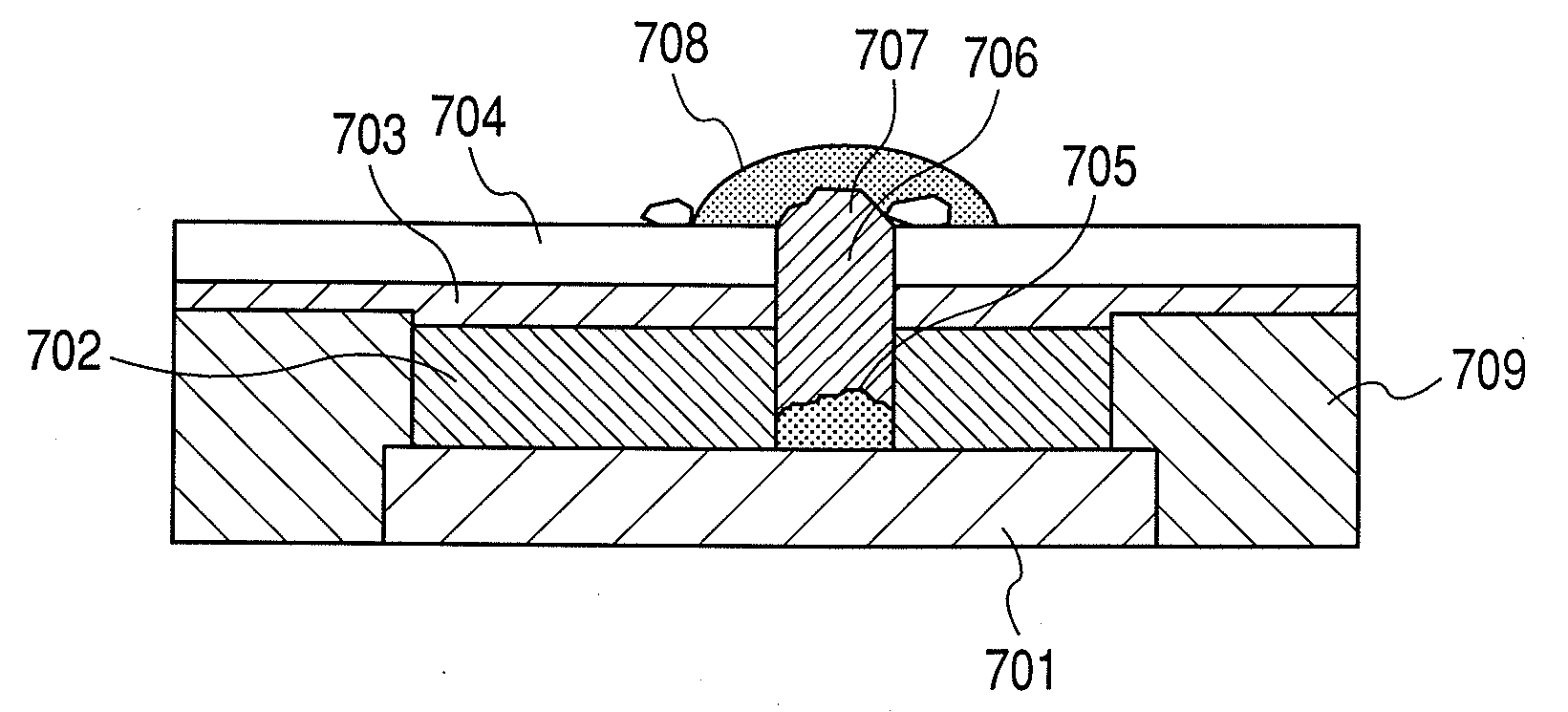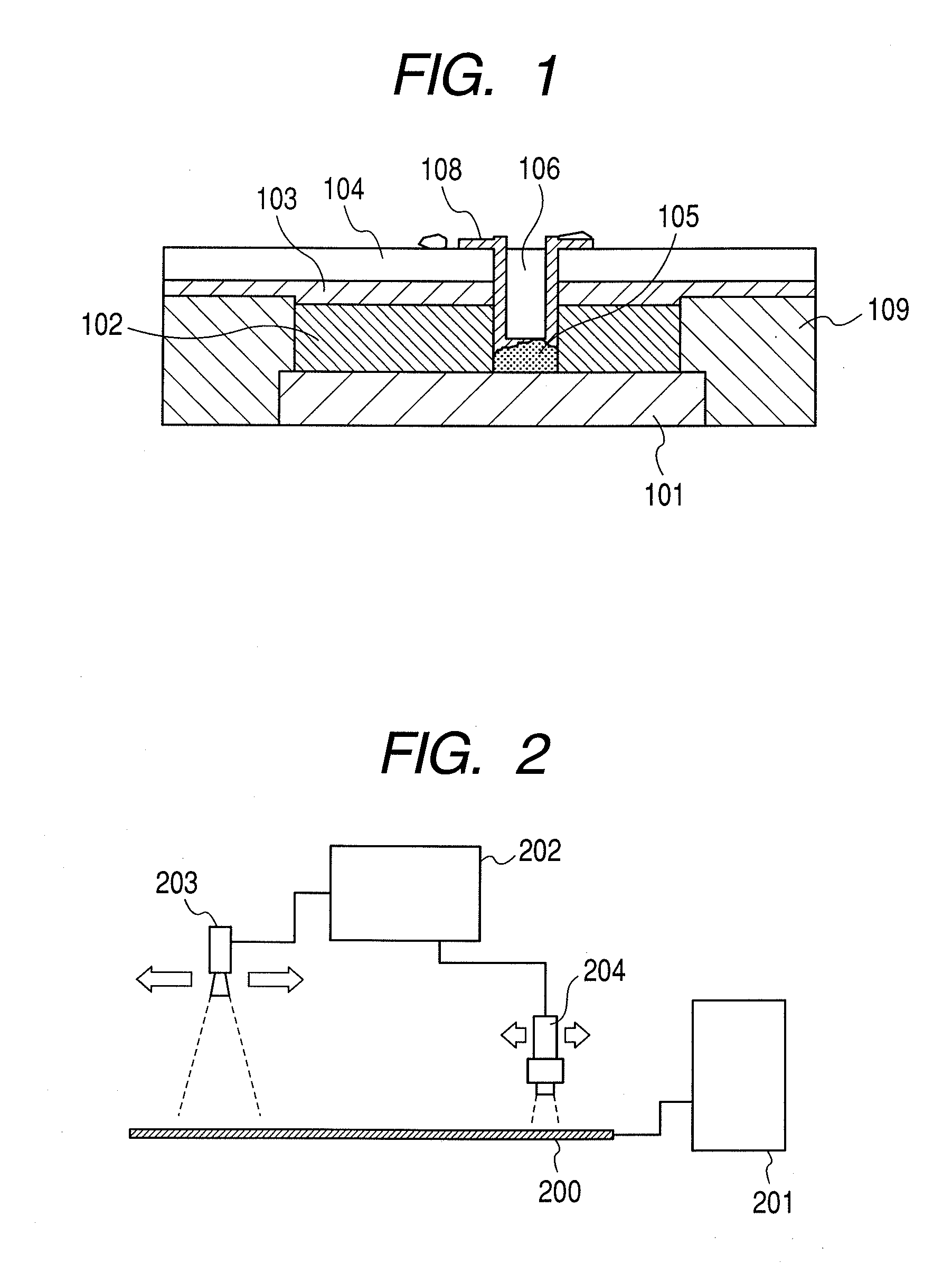Method of producing organic light emitting device
a light emitting device and organic technology, applied in the manufacture of electrode systems, cold cathode manufacturing, electric discharge tube/lamp manufacture, etc., can solve the problems of reducing affecting the sealing performance of the device, so as to achieve excellent sealing performance, reduce degradation, and improve the sealing performance
- Summary
- Abstract
- Description
- Claims
- Application Information
AI Technical Summary
Benefits of technology
Problems solved by technology
Method used
Image
Examples
example 1
Production of an Organic Light Emitting Device
[0059]FIG. 5 schematically shows an organic light emitting device before a short-circuited site is repaired. A plurality of organic light emitting devices shown in FIG. 5 are formed on a substrate, and in this Example, a short-circuited site among a plurality of organic light emitting devices is repaired in the following process. In FIG. 5, 501 denotes a first electrode, 502 denotes an organic layer, 503 denotes a second electrode, 504 denotes a first sealing layer, 505 denotes a particle, 506 denotes a short-circuited site, and 509 denotes a device separating layer.
[0060]First, the organic layer 502 was vapor-deposited on an integrated substrate with a size of 400 mm×500 mm with a TFT circuit (not shown) and the first electrode 501 mounted thereon. On the substrate, a plurality of device patterns are placed separately, and are separated after the completion of the production of organic light emitting devices.
[0061]In each device pattern...
example 2
[0075]An organic layer was vapor-deposited, and a second electrode and a first sealing layer were formed thereon successively, using a substrate similar to that produced in Example 1.
[0076]Next, each pixel was subjected to alignment correction, and thereafter, a light emission inspection was performed, whereby a short-circuited site was removed with a laser in the same way as in Example 1 except for setting the wavelength of a laser to be 266 nm.
[0077]Next, the short-circuited site which has been removed was filled with an insulating member. A hole injection material dissolved in an organic solvent was used as a filling material. At this time, the organic light emitting device with the first sealing layer formed thereon was kept at 60° C., and the organic solvent was evaporated immediately after being injected onto a substrate. The short-circuited site which has been removed was filled with a solution in which 0.5% triphenylamine was dissolved as a hole injection material with an in...
PUM
 Login to View More
Login to View More Abstract
Description
Claims
Application Information
 Login to View More
Login to View More - R&D
- Intellectual Property
- Life Sciences
- Materials
- Tech Scout
- Unparalleled Data Quality
- Higher Quality Content
- 60% Fewer Hallucinations
Browse by: Latest US Patents, China's latest patents, Technical Efficacy Thesaurus, Application Domain, Technology Topic, Popular Technical Reports.
© 2025 PatSnap. All rights reserved.Legal|Privacy policy|Modern Slavery Act Transparency Statement|Sitemap|About US| Contact US: help@patsnap.com



